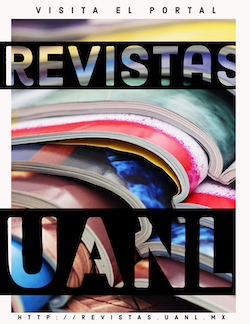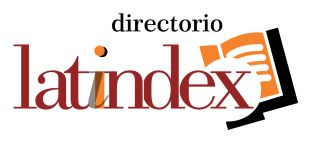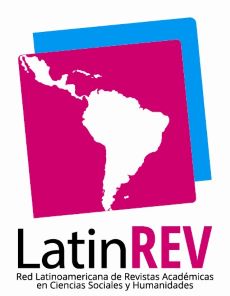El Programa de Justicia Juvenil Restaurativa y la Reducción de los Índices de Criminalidad
Una experiencia comparada
DOI:
https://doi.org/10.29105/cc2.3-34Palabras clave:
Justicia Restaurativa, Entorno Familiar, Adolescente en conflicto con la Ley PenalResumen
Cada vez son más los menores de edad que se encuentran inmersos en actos delictivos, ya sea en calidad de autores o partícipes, y ante esta desbordante situación se busca soluciones para afrontarla, que involucre al Estado, sociedad y familia; es por ello necesario determinar si el proyecto en mención incidirá en los índices de la criminalidad juvenil, así como nos ayudará a establecer sus limitaciones y fortalezas, analizando las buenas prácticas del derecho comparado, específicamente Costa Rica y Nicaragua, y por supuesto analizando los aportes de las teorías explicativas y de argumentación de las variables de estudio; es así que como hipótesis a nuestro problema planteado hemos considerado que el programa justicia juvenil restaurativa, desarrollado por el Distrito Fiscal de La Libertad, sí incidirá en la reducción de la criminalidad, debido a que la base o fundamento reposa en la recuperación e inclusión del adolescente infractor y la familia respectivamente, planteando la articulación entre familia sociedad y estado.
La población que consideramos como base de estudio es la totalidad de adolescentes que en el periodo de enero a agosto del 2017 se encuentran efectivamente cursando el programa, y que asciende a un total de 50 menores.
Al sostener que, para lograr una mayor efectividad del programa, en éste se debe admitir el involucramiento y participación de la familia y entorno social del adolescente, sin embargo, no lo limitemos solo al agresor, sino que consideremos también el involucrar al entorno familiar de la víctima.
Descargas
Citas
Crimen e Inseguridad, Indicadores para las Américas – Proyecto Violencia y Criminalidad en américa Latina y el Caribe – Flacso Chile y BID (Lucia Dammert, Felipe Salazr, Cristobal Montt, Pablo A. Gonzales).
Compañía Peruana de Mercados y Opinión Pública s.a.c (2016).: Marktreport Nº 05 – Perú Población 2016. DOI: https://doi.org/10.52143/2711-0281.476
Declaración de Lima sobre Justicia Juvenil Restaurativa (2009).
Gastañadui Ybañez (2012) “Justicia Restaurativa: Alternativa de enfrentamiento a la comisión de infracciones penales y garantía de respeto a los Derechos Humanos”, Revista Jurídica Derecho, Justicia & Sociedad.
Opinión Jurídica – Publicación de la Facultad de Derecho – “La medicación como herramienta de la justicia restaurativa” (Héctor Mauricio Mazo Alvarez)
Plan Nacional de Acción por la Infancia y la Adolescencia / PNAIA 2012 – 2021
Plan Nacional de Seguridad Ciudadana 2013 – 2018
Política Nacional de Prevención y Tratamiento del Adolescente en Conflicto con la Ley Penal / PNAPTA 2013 – 2018.
Revista de Justicia Juvenil Restaurativa “Justicia Juvenil Restaurativa: Marco Internacional y su desarrollo en América Latina” (Sergio Cámara Arroyo).
Secretaria Nacional de la Juventud – Ministerio de Educación (2013), Criminalidad y Violencia Juvenil en el Perú “Exploración en el contexto y orígenes del comportamiento transgresor entre los jóvenes”
Series de Manuales de Justicia Penal – NNUU – Nueva York (2006) Manual sobre Programas de Justicia Restaurativa.
Silva Sarneque (2006)“Derechos Humanos de los Niños y Adolescentes y la Legislación Internacional: reflexión entre el discurso de legalidad y la realidad”, Fondo Editorial, Mayagüez: Barco de papel, Lima
Descargas
Publicado
Cómo citar
Número
Sección
Licencia
Derechos de autor 2022 Constructos Criminológicos

Esta obra está bajo una licencia internacional Creative Commons Atribución-NoComercial 4.0.
Los autores/as que publiquen en esta revista aceptan las siguientes condiciones:
a. Los autores/as conservarán sus derechos de autor y garantizarán a la revista el derecho de primera publicación de su obra, el cual estará simultáneamente sujeto a la Licencia Creative Commons Atribución-NoComercial 4.0 Internacional. que permite a terceros compartir la obra siempre que se indique su autor y su primera publicación esta revista.
b. Los autores/as pueden realizar otros acuerdos contractuales independientes y adicionales para la distribución no exclusiva de la versión del artículo publicado en esta revista (p. ej., incluirlo en un repositorio institucional o publicarlo en un libro) siempre que indiquen claramente que el trabajo se publicó por primera vez en esta revista.
c. Se permite y recomienda a los autores/as a publicar su trabajo en Internet (por ejemplo en páginas institucionales o personales) posterior al proceso de revisión y publicación, ya que puede conducir a intercambios productivos y a una mayor y más rápida difusión del trabajo publicado (Véase El efecto del acceso abierto).










 Constructos criminológicos Vol. 5 Núm. 9, Julio-Diciembre 2025, es una publicación semestral editada por la Universidad Autónoma de Nuevo León, a través de la Facultad de Derecho y Criminología. Dirección de la publicación: Av. Universidad s/n Cd. Universitaria C.P. 66451, San Nicolás de los Garza, Nuevo León, México.constructoscriminologicos.uanl.mx, constructoscriminologicos@uanl.mx. Editor responsable: Dr. José Zaragoza Huerta, Facultad de Derecho y Criminología. Reserva de Derechos al Uso Exclusivo núm. 04-2024-110717414100-102 ISSN 2954-5234, ambos otorgados por el Instituto Nacional del Derecho de Autor. Responsable de la última actualización: Dr. José Zaragoza Huerta, Facultad de Derecho y Criminología Av. Universidad s/n Cd. Universitaria C.P. 66451, San Nicolás de los Garza, Nuevo León, México. Fecha de la última modificación 10 de julio 2025.
Constructos criminológicos Vol. 5 Núm. 9, Julio-Diciembre 2025, es una publicación semestral editada por la Universidad Autónoma de Nuevo León, a través de la Facultad de Derecho y Criminología. Dirección de la publicación: Av. Universidad s/n Cd. Universitaria C.P. 66451, San Nicolás de los Garza, Nuevo León, México.constructoscriminologicos.uanl.mx, constructoscriminologicos@uanl.mx. Editor responsable: Dr. José Zaragoza Huerta, Facultad de Derecho y Criminología. Reserva de Derechos al Uso Exclusivo núm. 04-2024-110717414100-102 ISSN 2954-5234, ambos otorgados por el Instituto Nacional del Derecho de Autor. Responsable de la última actualización: Dr. José Zaragoza Huerta, Facultad de Derecho y Criminología Av. Universidad s/n Cd. Universitaria C.P. 66451, San Nicolás de los Garza, Nuevo León, México. Fecha de la última modificación 10 de julio 2025.